Everything about marginal ridges and their importance in restorative dentistry.
What are Marginal Ridges?
A marginal ridge is [1]-
- An elevation of enamel that forms the proximal boundaries of the occlusal surface of premolars and molars. [Figure 1]
- An elevation on the mesial and distal portions of the lingual surface and, occasionally, the labial surface of incisors. [Figure 2]


Clear and well defined marginal ridges find an importance place in the success of minimally invasive dentistry.
Minimally invasive dentistry is the application of systematic respect for the original tissue.[2] From an endodontic point of view, minimal invasive endodontics (MIE) ranges from diagnosis to decision making, minimally but purposefully crafted access opening based on anatomical challenges, to minimal removal of dentin during access opening, enlarging and shaping of the root canal to retain as much sound dentin as possible, to retention of tooth structure during dissembly and retreatment or considering apical surgical intervention, to performing a crown lengthening procedure to establish sound tooth margins for core/crown restorations as opposed to tooth extraction and implant or bridge placement.[2]
Why is Marginal Ridge Important?
The thickness of enamel at the marginal ridge is high and loss of tooth structure in this area weakens the tooth structure. Both clinical and experimental studies have highlighted the importance of preserving the marginal ridge.[3-5]
Their essential feature is to prevent food lodgement which causes damage to the periodontium. Don’t forget that your floss slides between the marginal ridges of your posterior teeth.
As the age advances the dimensions of the marginal ridges and occlusal embrasures are reduced due to vertical occlusion attrition and proximal flattening of the contact areas, and this further compromises the tooth structure.[6]
Ideal Marginal Ridge in Restorations
It is imperative to have a marginal ridge of proper dimension, compatible to the occlusal anatomy, creating a pronounced adjacent triangular fossae and occlusal embrasure. In restorations, marginal ridge should always be formed in two planes bucco-lingually meeting at a very obtuse angle. This feature is essential when an opposing functional cusp occludes with the marginal ridge as it prevents food lodgement which causes damage to the periodontium.
There are two forces acting on two marginal ridges, force 1 and 2 which have their horizontal components, 1H and 2H which drive the two teeth towards each other, thus preventing any proximal impaction of food.[7] The vertical forces 1V and 2V which are acting vertically are resolved normally by the underlying tissue [Figure 3].[8] The marginal ridge portion of the restoration should be compatible with the adjacent marginal ridge, both the ridges should be approximating at the same level and display correct occlusal embrasure for the passage of the food to facial and lingual surface.[9]

Marginal Ridges in Restorations – Different Situations
- Absence of marginal ridge in the restoration: The force 1 will be directed towards the proximal ridge of the adjacent tooth and force 2 is directed on to the same tooth, so the horizontal forces 1H and 2H will act on the same tooth, which will tend to drive the two teethaway from each other. The vertical component 1V and 2V can impact the food intraorally [Figure 4].

- A marginal ridge with an exaggerated occlusal embrasure: Forces 1 and 2 directed toward the adjacent proximal surfaces, with the horizontal components, 1 H and 2H, will separate the teeth with the vertical components, 1V and 2V driving interproximally.[Figure 5]

- Adjacent marginal ridge not compatible with height: Restoring the marginal ridge higher than the adjacent one will allow force 1 (A) on the proximal surface of the restoration, the horizontal component 1H (AH) will drive the restored tooth away from the contactingtooth and the vertical component will push debris interproximally even in the presence of force 2 (B) with its horizontal component (BH) acting on the adjacent marginal ridge there is some separation of the teeth as force 2(B) is too small as compared to force 1 (A). By restoring the marginal ridge lower than the adjacent one we can expect the same movement of the tooth but the major movement will be non restored tooth. [Figure 6 a and b]

- Marginal ridge with no triangular fossae: In this situation there are no occlusal planes in the marginal ridges, so there are no occlusal forces acting 1 and 2, so there are no horizontal component 1H and 2H to drive the tooth toward each other and vertical force1V and 2V will impact the food interproximally.[Figure 7]

- Marginal ridge with no occlusal embrasure: Two adjacent marginal ridges will act like a pair of tweezers grasping food substance passing over it. Although debris may not be forced interproximally, it will be very difficult to remove once it is thus trapped. [Figure 8]

- Single or one- planed marginal ridge in bucco-lingual direction: This can create a premature contact during both function and static occlusion, one plane marginal ridge increases the depth of adjacent triangular fossa by increasing the stress in this area and also increases the height of the marginal ridge at the centre, and this will deflect the food away from the spillway. [Figure 9]

- Thin marginal ridge in mesio-distal bulk: Will be susceptible to fracture or deformation leading to the problems of previously mentioned faulty marginal ridges (discussed in point 1, 2, 3 and 4). [Figure 10]

- Marginal ridges not compatible in dimension or location with the rest of the occluding surface components predisposes to similar problems. As the marginal ridge is frequently a part of occluding anatomy, it should have the same occlusal pattern that dictates the shapes, locations, and inter-relationships of the rest of the occluding components.[Figure 11]. Studies have shown that regardless of loading directions and location, the marginal ridges and proximal contact area were sites of low strain.[9]

Marginal Ridges & Force Dissipation
Marginal ridges of the posterior tooth are considered to be of primary importance in providing structural strength to crown.[11,12] In posterior teeth, the occlusal morphology is reproduced in a fashion that during mandibular closure, there are even simultaneous contacts of maximum possible teeth achieving (a) maximum stability of the teeth (b) minimal amount of force placed on each tooth in function. The contact pattern of the teeth should be such that it directs the occlusal forces favorably for their adequate dissipation. When the occlusal morphology is such that the cusp tip is contacted on a flat surface, i.e. bottom of a fossa or crest of the marginal ridge, the resultant occlusal force gets directed vertically along the long axis of the tooth. The fibres of periodontal ligament are arranged in a manner that such forces are well accepted and dissipated [Figure 12].

As opposed to this, when the occlusal morphology is such that the teeth contact each other on an incline, the resultant force is not directed along the long axis, instead a horizontal component is created which tends to cause tipping of teeth.[16-19] [Figure 13].

Besides tipping, there may also be other clinical consequences of incline contacts. [Figure 14]

The process of directing occlusal forces through the long axis of the tooth is known as axial loading. It can be achieved by the following contact patterns
- Cusp-fossa/Cusp–ridge contact
- Tripod contacts
Cusp-fossa occlusal relationship (tooth-to-tooth relationship)
In cusp-fossa pattern of occlusion, the cusps and fossae of one tooth occlude with the cuspsand fossae of only one opposing tooth [Figure 15]

Cusp – ridge occlusal relationship (tooth-to-two-teeth contact/cusp- embrasurerelationship)
In cusp-ridge pattern of occlusion, there is fitting of one stamp cusp into a fossa and fitting of another stamp cusp of the same tooth into the embrasure area of two opposing teeth (against two marginal ridges of adjacent teeth). It is the most stable relationship [Figure 16].[20]

Tripod contacts /tripodization
In complete closure in a normal young mouth, the supporting cusps are held in firm position by at least three contacts. These contacts occur on the inclines of the cusps. There is one buccal and one lingual contact for each cusp along with one mesial or distal contact. These contacts can be with opposing marginal ridges or triangular, transverse, or oblique ridges.[Figure 17] They provide occlusal stability both buccolingually and mesiodistally. [16]

Marginal Ridges in Endodontically Treated Teeth
Root filled teeth are vulnerable to tooth loss as compared to teeth with vital pulps due to following risk factors [21]
- Post‐treatment disease following root canal treatment – de Chevigny et al 2008.
- Loss of substantial tooth structure through caries, previous restorative treatment and endodontic procedures – Trope & Ray 1992, Hansen & Asmussen 1993.
- Weakening of tooth structure through use of endodontic chemicals (calcium hydroxide, sodium hypochlorite, EDTA, chlorhexidine, alcohol – Uzunoglu et al 2012.
- Dehydration of dentine and transformation of collagen fibre structure (age factor, loss of unbound water from the root canal space and the dentinal tubules in pulpless teeth – Bakland & Andreasen 2012.
- Reduction in the level of proprioception, which can lead to uncontrolled occlusal forces – Randow & Glantz 1986.
- Additionally, other individual factors, such as gender, occlusion, parafunctions, the material of the antagonist occlusal surface (e.g. implant supported crown), oral hygiene or saliva flow, can influence the prognosis of restored teeth- Kishen et al 2006.
With the advancements in magnification and techniques for root canal instrumentation, the implementation of conventional/traditional access cavity preparations is no longer practicised due to increased risk of tooth fracture. [ 11,12]
Minimal invasive preparations with maximal conservation of the dentinal tissues can increase the fracture resistance of the teeth. [13,14] The marginal ridge has shown to be critical in the maintenance of the tooth stiffness and limiting excessive cuspal deflection[15]. It has a greater thickness of enamel than other areas. Loss of one or more marginal ridge weakens the tooth. [11,12] It was found that the loss of tooth stiffness was 20% for an occlusal cavity, compared to 45% for a mesio‐occlusal (MO)/disto‐ occlusal (DO) cavity and 63% for a MO‐ distal (MOD) cavity. [5,15]
A reduction of only 5% of tooth stiffness was measured by Reeh et al. when a conservative endodontic access cavity was carried out before or after any restorative preparations, whereas a wider occlusal cavity was associated with 20% reduction in tooth stiffness.[5] An endodontic access cavity and an occlusal cavity surely will involve removal of the same tooth structure. However, the difference in reduction of the tooth stiffness was reported to be four fold for an occlusal cavity compared to an endodontic access cavity. This significant difference was attributed to the possibility ofgreater encroachment of an occlusal cavity preparation on the marginal ridge area compared to an endodontic access cavity. [5]
Conclusion
Marginal ridge with these specifications is essential for the
- Balance of the teeth in the arch (Maintaining the mesio-distal dimension of the dentalarch)
- Prevention of food impaction proximally
- Protection of periodontium
- Prevention of recurrent and contact decay
- Efficient mastication (i.e guided mastication)
- Anchoring the teeth against each other
- Some marginal ridges function as working occluding cuspal elements.
Author Contact details – Dr. Sneha L Shitole (MDS) can be contacted at drsneha786@gmail.com
References
- Medical Dictionary for the Health Professions and Nursing © Farlex 2012
- Gutmann J L. Minimally invasive dentistry (Endodontics). J Conserv Dent 2013; 16:282–283.
- Hansen A R, Asmussen E, Christiansen N C. In vivo fracture of endodontically treated posterior teeth restored with amalgam. Endod Dent Traumatol 1990; 6:49-55.
- Mondelli J, Steagall L, Ishikiriama A, de Lima Navarro M F, Soares F B. Fracture strength of human teeth with cavity preparation. J Prosthet Dent 1980; 43:419-22.
- Reeh E S, Messer H H, Douglas W H. Reduction in tooth stiffness as a result of endodontic and restorative procedures. J Endod 1989; 15:512-6.
- Marzouk M A, Simonton A L, Gross R D. Operative Dentistry Modern Theory and Practice. 1st ed. Tokyo: Ishiyaku EuroAmerica, Inc. Publishers; 1989: 240-5.
- Vimal K S. Textbook of Operative Dentistry. 2nd ed. New Delhi: CBS Publishers and Distributors; 2008:71-7.
- Roberson T M, Heymann H, Swiff E J. Sturdevent’s Art and Science of Operative Dentistry. 4th ed. Maryland Heights; Mosby Publications; 2002, 389-99, 410, 174-7 & 33-5.
- Palamara J E, Palamara D, Messer H H. Strains in the marginal ridge during occlusalloading. Aust Dent J 2002; 47:218-22.
- Ashwini Tumkur Shivakumar, Sowmya Halasabalu Kalgeri, Sangeeta Dhir. Clinical considerations in restorative dentistry – A narrative review. Journal of the International Clinical Dental Research Organization 2015; 7(2):122-129.
- Hany Mohamed A A. Thoughts on conventional and modern access cavity preparation techniques. ENDO (Lond Engl) 2015;9(4):287– 288.
- Gluskin A H, Peters C I, Peters O A. Minimally invasive endodontics: challenging prevailing paradigms. Br Dent J2014; 216:347–353.
- Oliveira de F, Denehy G E, Boyer D B. Fracture resistance of Endodontically prepared teeth using various restorative material. Journal of American Dental Association 1987; 115:57-60.
- Shahrbaf S, Mirzakouchaki B, Oskoui S S, Kahnamoui M A. The effect of marginal ridge thickness on the fracture resistance of endodontically-treated, composite restored maxillary premolars. Operative Dentistry 2007; 3293):285-290.
- Abu-Awwad M. A modern guide in the management of endodontically treated posteriorteeth. Eur J GenDent 2019; 8:63-70.
- Sandhu S, Lal J, Singh S, Sandhu R, Sra J. Significance of establishing occlusal anatomy in operative dentistry. Saint’s International journal 2016; 2(1):7-10.
- Stuart C E. Why dental restorations should have cusps. J Prosthet Dent 1960; 10:553-5.
- Okeson J P. Management of Temporomandibular Disorders and Occlusion. 6th ed. C V Mosby Company, St. Louis (MO): 2008.
- Davies S J, Gray R M, Smith P W. Good occlusal practice in simple restorative dentistry. Br Dent J 2001; 191:365-8, 371-4, 377-81
- Roberson T M, Heyman H O, Swift E J. Strudevant's Art and Science of Operative Dentistry. 5th ed. Pheladelphia: Mosby Inc.; 2006.
- Zarow M, Ramırez-Sebastia A, Gaetano P, de Ribot Porta J, Mora J, Espona J, Duran-Sindreu F, Roig
- M. A new classification system for the restoration of root filled teeth. International Endodontic Journal, 51, 318–334, 2018.

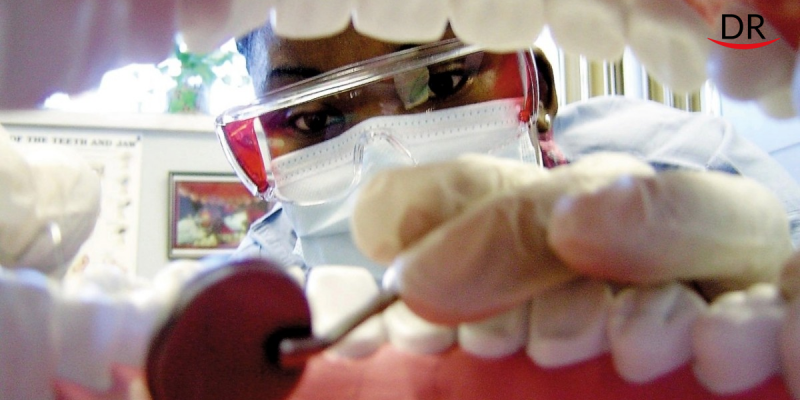





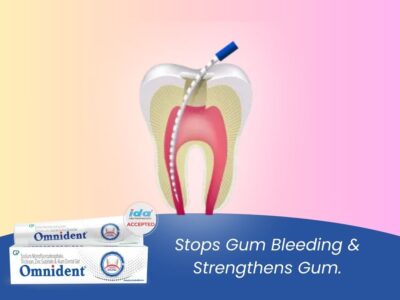
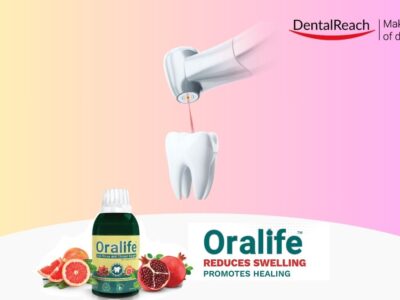
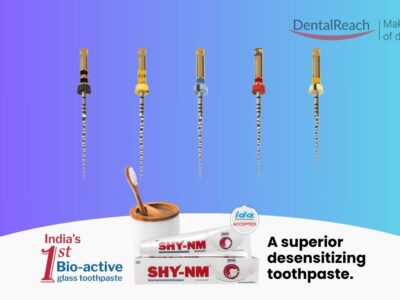
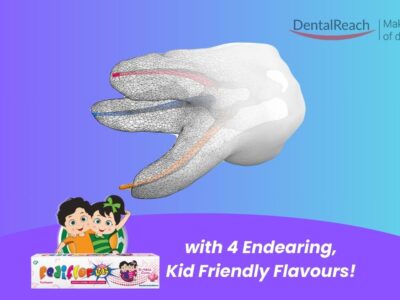









Comments